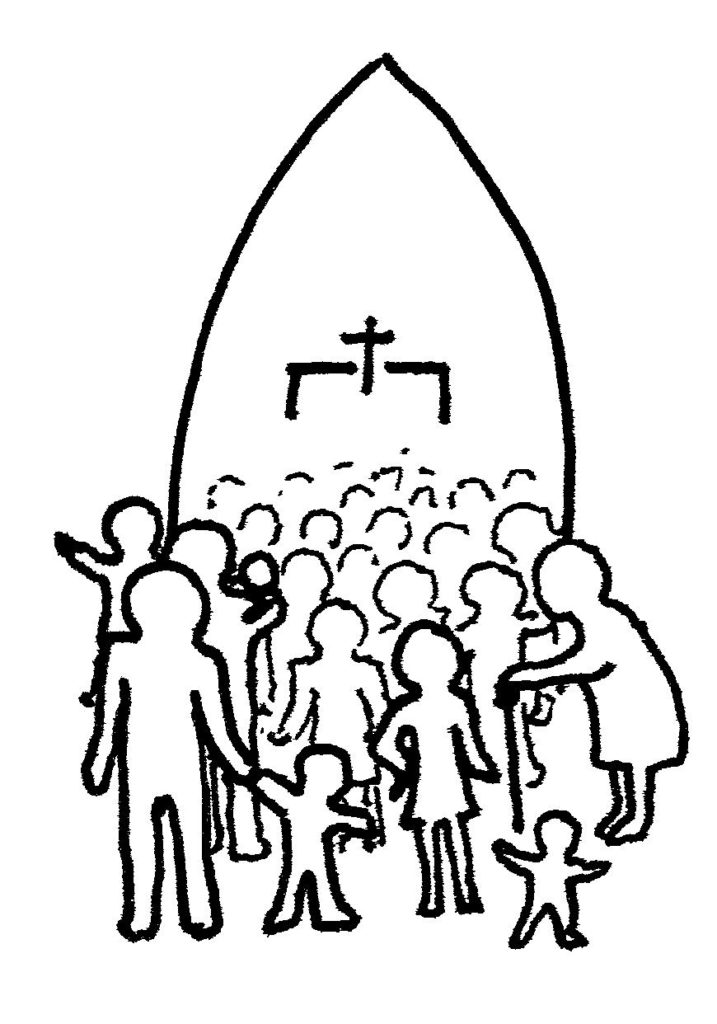So What’s This Church Culture All About?

Following on our discussion about systems and relational networks is the issue of culture.
When I consider a church, I see there are always two organizations, two cultures if you will. There is the one we actually see, what we often call the legacy culture. This is the culture that was first put in place when the church was established, and has developed through the years out in the open.
Then there is the one that lies beneath the surface, what we call the shadow culture. This is where a blind spot for the church exists. This second organization is usually invisible to outsiders and even insiders. What I’ve heard again and again from clergy and lay leadership through the years is this: ‘I never knew what this church was really like, until I went to work on its staff or got on the ruling board.’ This hidden shadow culture is far more powerful than that which is seen. This shadow culture is comprised of what we do, not what we say. It shapes the decisions we make about virtually everything that occurs within the church. Because it is hidden, it operates with its own set of rules which are rarely, if ever, examined or clearly understood. Remember what I said to you a few weeks ago, culture hides best from its own members. But often, the behavior exhibited is quite out of alignment with the stated beliefs of that particular organization.
You’ll hear in board meetings statements like, ‘Oh, we never do that kind of thing around here.’ Initiatives that a forward-thinking pastor wants to bring about are voted down for no apparent reason. Some pastors leave in utter frustration after butting up against the shadow culture, often unaware as to what happened to sabotage his best laid plans.
You now might be asking yourself, how this can happen, especially with intelligent, spiritually attuned people. Most people aren’t as clear thinking and rational as they think they are. The mind can protect itself against anxiety by dimming awareness. This is also true collectively, within organizations. When there are issues that an organization simply cannot face – those that go against the dictates of the shadow culture, –it is often better to allow these issues to fade from awareness. Of course, it’s not gone, it’s just buried somewhere ready to reemerge when the time is right.
This mechanism creates a blind spot: a zone of blocked attention and self-deception. And as I said, these blind spots make up most, if not all, the shadow culture. These blind spots act as immune systems, defining what the organization is, and what it is not. When a person makes an attempt to see his blind spot, he becomes aware (and often ashamed) of those qualities and impulses he denies in himself. But interestingly enough, he can see these same qualities in other people — egoism, mental laziness, sloppiness, unreal schemes, carelessness, cowardice, and what have you. Here’s several questions to ask yourself to get at your own personal blind spot.
• What are your exaggerated feelings about others? (I can’t believe he would do that!)
• What traits in others constantly irritate you? (This is the third time you’ve been late) What is the personality type that you find most despicable?
• What traits in others do you deeply admire?
• What recurring behaviors do you exhibit that have a troubling effect on others? (Bill and I both feel you aren’t straightforward with us)
• What are your impulsive and inadvertent acts?
• In what situations are you humiliated? (I’m so ashamed of how he treats me)
• What do you think about when there is nothing to think about? Where does your mind go? What images and fantasies invade your thoughts?
So, each of us has our own blind spot. And churches also have a blind spot. Consider the blind spot in organizations, even in countries if you will. The blind spot varies from culture to culture, denomination to denomination, and church to church within any given denomination. So, for example, the wider culture may have a blind spot to certain sexual issues, a denomination within that culture may center this sexual blind spot on one issue, and a particular church may narrow the blind spot more precisely to one particular issue within the designated issue.
Unfortunately, the blind spots within individuals tend to align with the blind spots in the organizations they inhabit. If I joined an organization that blatantly owned and displayed what for me was blind, I’d immediately be repulsed and have to leave, unless I can somehow come to terms with my blind spot. But alas, unconscious forces usually drive us in directions that are potentially harmful.
Organizational blind spots contain certain relationships, arrangements and issues that the organization denies and rejects. In these blind spots, activities, arrangements, and relationships within the organization unfold, but are not identified, discussed, or in any way managed. This, as I mentioned, is the fertile ground for secrets and coalitions to grow, where one group is pitted against another over some issue or the other.
Churches have the sense that they are rational organizations, governed by policy cobbled together by sound reason and sound theological tenets. The irrational is rejected. But it is not really rejected, it is cast into the blind spot. But irrational behavior in churches is considered so rational (at the same time it is denied), that it is laughable if the results weren’t so tragic.
It’s not that all blind spot side activities are evil and harmful. By no means. Many of these blind elements are not only ethical, but don’t add value to the organization – an example is being task-oriented rather than people-oriented. They are just out of awareness, and thus often out of alignment with the stated aims and objectives of the church. But because they are out of alignment, they can often lead to what we would consider evil in that once out of alignment, we become incongruent – what we say doesn’t match what we do. And once incongruent, we begin to lose the trust of our constituency. Usually, it’s the teenagers in the congregation that pick this up first.
‘So, what’s the solution to all of this?’ you might ask. The simple answer is building a culture that is clear and open for inspection, that aligns your values, with your mission and vision. This then becomes you ‘pair of glasses’ for discerning every decision you make – where should we spend our money, what should our building look like, who should we hire, what programs should we promote and jettison?
All of this sounds simple. Just have a strategic planning session where we lay out our values, our mission, and our vision. Then plot our way forward. But remember, there are many competing values and loyalties at play within the congregation. You see it every Sunday morning when you select which songs and hymns to sing, and what kind of accompaniment will be provided. Many people are wired in such a way as to direct them away from openness and clarification (we’ll talk more about this as we unpack leadership issues). They are more comfortable with obfuscation. ‘Let’s just bury all of this.’
Take a minute now to think about how to determine your church’s culture. I’ve used a much more extended process, but these questions can get you started. Here’s a few questions for determining your church’s culture.
Determining the church culture:
What is the church actually there to do (beyond its stated mission)?
Where does the church put its time and money?
What is reflected in your architecture?
Who are the heroes here?
What are the prevailing stories?
What conflicts have been ongoing and unresolved?
Now make a graph for your church. Put on it those characteristics that you would say are the ideal characteristics you are attempting to portray to the world. Next put those characteristics that you would like to remain hidden. Finally, begin to construct what might be the blind spot of the church – those characteristics that are denied.
Ideal Characteristics Hidden Characteristics Blind Spot




